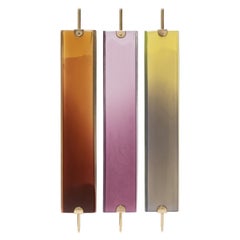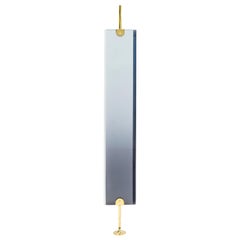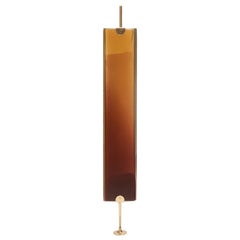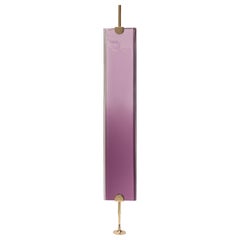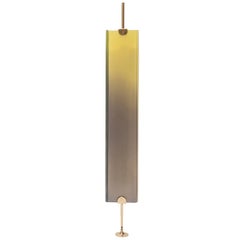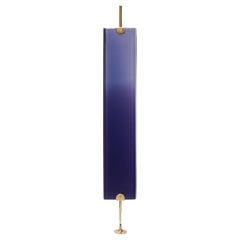Reverso Room Divider
2010s Italian Modern Screens and Room Dividers
Brass
21st Century and Contemporary Italian Modern Screens and Room Dividers
Brass
21st Century and Contemporary Italian Modern Screens and Room Dividers
Brass
21st Century and Contemporary Italian Modern Screens and Room Dividers
Brass
21st Century and Contemporary Italian Modern Screens and Room Dividers
Brass
21st Century and Contemporary Italian Modern Screens and Room Dividers
Brass
21st Century and Contemporary Italian Modern Screens and Room Dividers
Brass
21st Century and Contemporary Italian Modern Screens and Room Dividers
Brass
21st Century and Contemporary Italian Modern Screens and Room Dividers
Brass
People Also Browsed
2010s Brazilian Modern Stools
Teak, Upholstery, Fabric
2010s French Post-Modern Wall Lights and Sconces
Clay
Mid-20th Century Polish Mid-Century Modern Dining Room Chairs
Velvet, Beech, Wool
1990s Italian Mid-Century Modern Chandeliers and Pendants
Brass
2010s Wall Lights and Sconces
Brass, Bronze, Enamel, Nickel
2010s Italian Modern Chairs
Plexiglass
21st Century and Contemporary Portuguese Beds and Bed Frames
Cotton, Wood
21st Century and Contemporary Vietnamese Organic Modern Side Tables
Plaster
21st Century and Contemporary Ukrainian Stools
Metal
21st Century and Contemporary French Mid-Century Modern Chandeliers and ...
Metal
21st Century and Contemporary Polish Organic Modern Wall Mirrors
Stainless Steel
Vintage 1970s Italian Mid-Century Modern Dry Bars
Chrome
21st Century and Contemporary Italian Chandeliers and Pendants
Murano Glass
2010s French Post-Modern Flush Mount
Brass
21st Century and Contemporary French Art Deco Table Lamps
Hide, Parchment Paper, Wood
Early 2000s Italian Mid-Century Modern Wall Mirrors
Brass
Draga & Aurel for sale on 1stDibs
Italian furniture brand Draga & Aurel was conceived by a dynamic duo: textile and fashion designer Draga Obradovic and graphic artist and wood sculptor Aurel K. Basedow. Their multidisciplinary backgrounds empowered them to create highly original contemporary furniture and lighting. Basedow’s explorations of resin casting — applying colorful epoxy resins and pigments to walls, furniture and design items — has produced extraordinary pieces when upholstered with Draga’s exquisite fabrics.
Obradovic was born in Serbia in 1964 and moved to Italy in 1984 to pursue a degree in painting from the Florence Academy of Fine Arts. She began her career in fashion as a model but quickly became fascinated with creating womenswear, where she discovered an interest in fabric patterns. Her love of textiles allowed her to create fashion concepts by achieving a union between fine art and couture.
Basedow was born in Germany in 1963. After three years as a woodworking apprentice, he decided to change his career trajectory. Moving to Italy in 1986, he enrolled as a student at the Florence Academy of Fine Arts, where he met Obradovic. He obtained his degree in graphic arts in 1989 from the Milan Academy of Fine Arts, while pursuing a fervent interest in African drums.
After more than two decades of living together and developing a shared passion for contemporary art and design, they opened their Draga & Aurel atelier in Como, Italy, in 2007. The duo’s unique collaboration with Baxter — cleverly reinventing vintage furniture finds by deconstructing and rebuilding them with new components such as textiles and handles — brought them notoriety in the interior design world. Other successful collaborations with Visionnaire furniture and the wallpaper brand Wall&Deco garnered international recognition.
On 1stDibs, find Draga & Aurel seating, tables, lighting and more.
A Close Look at Modern Furniture
The late 19th and early 20th centuries saw sweeping social change and major scientific advances — both of which contributed to a new aesthetic: modernism. Rejecting the rigidity of Victorian artistic conventions, modernists sought a new means of expression. References to the natural world and ornate classical embellishments gave way to the sleek simplicity of the Machine Age. Architect Philip Johnson characterized the hallmarks of modernism as “machine-like simplicity, smoothness or surface [and] avoidance of ornament.”
Early practitioners of modernist design include the De Stijl (“The Style”) group, founded in the Netherlands in 1917, and the Bauhaus School, founded two years later in Germany.
Followers of both groups produced sleek, spare designs — many of which became icons of daily life in the 20th century. The modernists rejected both natural and historical references and relied primarily on industrial materials such as metal, glass, plywood, and, later, plastics. While Bauhaus principals Marcel Breuer and Ludwig Mies van der Rohe created furniture from mass-produced, chrome-plated steel, American visionaries like Charles and Ray Eames worked in materials as novel as molded plywood and fiberglass. Today, Breuer’s Wassily chair, Mies van der Rohe’s Barcelona chair — crafted with his romantic partner, designer Lilly Reich — and the Eames lounge chair are emblems of progressive design and vintage originals are prized cornerstones of collections.
It’s difficult to overstate the influence that modernism continues to wield over designers and architects — and equally difficult to overstate how revolutionary it was when it first appeared a century ago. But because modernist furniture designs are so simple, they can blend in seamlessly with just about any type of décor. Don’t overlook them.
Finding the Right Screens-room-dividers for You
Whether they are implemented as decorative accents or makeshift partitions to ensure privacy, antique and vintage folding screens and room dividers easily introduce sophistication and depth to any space in your home.
The earliest examples of folding screens are said to have originated in China and go back at least as far as the Han dynasty. Screens of the era were heavy structures made of wood and had hinges of cloth or leather. They were adorned with elaborate landscape paintings that were typically created on silk or paper canvases and applied directly to the screen’s panels afterward. Just as they had been in the 20th century and today, the folding screens then were recognized for both their practical and purely decorative properties.
Japanese room-divider screens were also decorated with paintings but constructed to be lightweight and mobile. They took on considerable event-based importance when the structures gained popularity in the East Asian country, as the folding screens were used in performing arts such as concerts, tea ceremonies and more. Later, artists elsewhere warmed to folding screens and sought to create their own.
In European countries such as France, where they were known as paravent, folding screens began to materialize in apartments in Paris, gaining favor with the likes of pioneering couturier Gabrielle “Coco” Chanel, who is said to have accrued more than 30 and used them as a precursor to what we now know as wallpaper.
On 1stDibs, find a wide range of antique and vintage folding screens and room dividers, which, given their history, may do a better job of bringing people and cultures together in your home than sectioning off a space. Search by material to find options in metal, fabric or wood, or browse by style for mid-century modern designs and examples from the Art Deco era.
